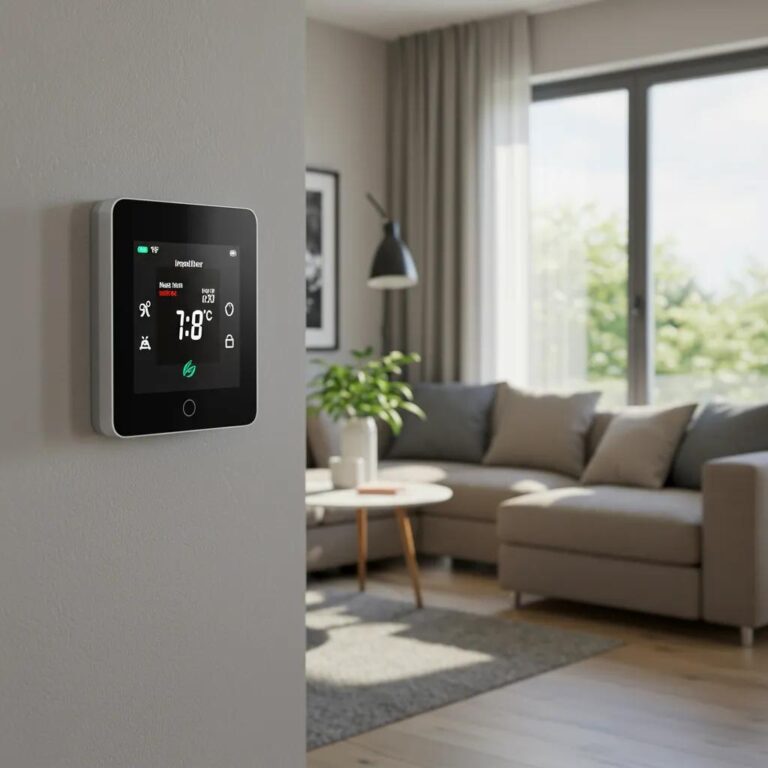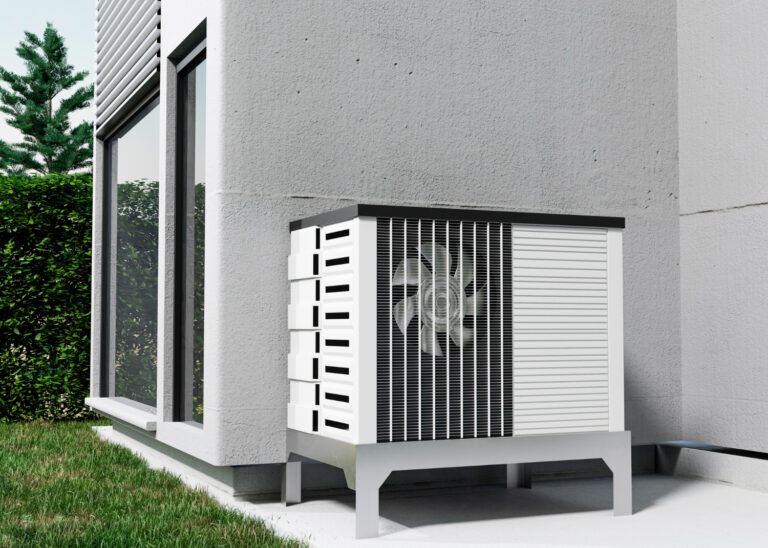Strategies for Efficient Heat Pump Installation in Light Commercial Settings
Efficient heat pump installation in light commercial settings requires careful planning and execution. Businesses rely on these systems for maintaining a comfortable environment for both employees and customers. Poor installation can lead to operational issues, increased energy costs, and frequent breakdowns.
Planning and Preparation for Heat Pump Installation
Initial Site Assessment
The first step in any heat pump installation project is a comprehensive initial site assessment. Our professionals conduct a thorough inspection of the building to understand its unique requirements. They evaluate factors like insulation quality, existing HVAC infrastructure, and building layout. By identifying zones that require more or less heating and cooling, we can plan an effective heat pump system tailored to your needs. This step ensures that the installation process is streamlined and any potential issues are identified early.
Load Calculation and System Sizing
Accurate load calculation and system sizing are crucial for the efficient operation of a heat pump. Our technicians calculate the heating and cooling load based on the size of the space, occupancy levels, and usage patterns. This involves detailed measurements and the use of specialized software to determine the appropriate size and capacity of the heat pump. Proper sizing ensures that the system operates efficiently, reducing energy consumption and wear and tear. An accurately sized system provides consistent comfort and reduces the need for frequent maintenance.
Selecting the Right Heat Pump Model
Choosing the right heat pump model is essential for meeting the specific needs of a light commercial setting. Our professionals consider factors such as energy efficiency ratings, noise levels, and compatibility with existing systems. Based on the load calculations, we recommend models that provide optimal performance. We also take into account any budget constraints without compromising on quality. By selecting the right model, we ensure that your heat pump delivers both efficiency and reliability, catering to the specific needs of your business.
Compliance with Building Codes and Regulations
Adhering to building codes and regulations is a critical aspect of heat pump installation. Our technicians are well-versed in local and national standards to ensure full compliance. This involves meeting ventilation requirements, ensuring proper clearance for units, and adhering to electrical codes. By following these guidelines, we avoid any legal complications and ensure the safety of the installation process. Compliance with regulations also ensures that the system operates efficiently and safely, protecting both your investment and your building’s occupants.
Enhanced Installation Techniques for Light Commercial Settings
Proper Placement of Indoor and Outdoor Units
The placement of indoor and outdoor units significantly affects the performance of a heat pump system. Our professionals carefully select locations that ensure optimal airflow and minimal obstruction. Indoor units are installed in areas that provide even distribution of air, while outdoor units are placed in well-ventilated spaces to prevent overheating. Proper placement reduces strain on the system, leading to better efficiency and longevity. By strategically positioning these units, we enhance overall system performance and energy efficiency.
Ductwork and Piping Optimization
Optimizing ductwork and piping is essential for effective heat pump installation. Our technicians thoroughly inspect existing ductwork for any leaks or obstructions and repair or replace sections as necessary. Properly sealed and insulated ductwork improves airflow and prevents energy loss. Additionally, we optimize piping to ensure efficient refrigerant flow between the indoor and outdoor units. Correctly sized and installed ducts and pipes reduce the workload on the heat pump, improving its efficiency and lifespan.
Electrical Connections and Safety Protocols
Ensuring safe and reliable electrical connections is a key part of the installation process. Our professionals follow strict safety protocols to connect the heat pump to the building’s electrical system. This includes using appropriate wiring and ensuring that all connections are secure and meet regulatory standards. We also install necessary safety devices such as circuit breakers and surge protectors. Proper electrical setup is crucial for the safe and efficient operation of the heat pump, reducing the risk of electrical hazards.
System Configuration and Fine-Tuning
After installation, system configuration and fine-tuning are necessary to ensure optimal performance. Our technicians calibrate the thermostat settings, adjust fan speeds, and configure control systems. They also perform initial performance tests to verify that the system operates as intended. Fine-tuning helps to balance the heating and cooling load, ensuring consistent temperature control throughout the building. By carefully configuring the system, we maximize efficiency and comfort, providing a reliable heating and cooling solution for your business.
Post-Installation Inspections and Testing
Performance Testing and Verification
Once the heat pump installation is complete, performance testing and verification are critical. Our technicians conduct a series of tests to ensure that the system operates efficiently. They check airflow, measure temperature differentials, and verify refrigerant levels. These tests help to confirm that the heat pump meets the specified criteria and performs as expected. This step is essential for identifying any issues early and ensuring that the system runs smoothly.
Addressing Initial Operational Issues
During the initial testing phase, it is not uncommon to encounter operational issues. Our professionals address these problems immediately to prevent future complications. They may adjust system settings, recalibrate the thermostat, or troubleshoot electrical connections. By addressing these issues early, we ensure that your heat pump operates efficiently from the start. Quick resolution of initial problems helps to minimize downtime and maintain comfort for building occupants.
Scheduling Routine Maintenance Checks
Routine maintenance checks are essential for the longevity and efficiency of your heat pump. Our technicians schedule periodic inspections to clean filters, check electrical components, and test system performance. Regular maintenance helps to identify wear and tear before it becomes a problem. Scheduling these checks ensures that the system continues to operate at peak performance, providing consistent comfort and reducing the need for costly repairs.
Training Staff on System Operation
Proper training on system operation is crucial for ensuring that your staff can manage the heat pump system effectively. Our professionals provide comprehensive training sessions that cover basic operations, setting adjustments, and troubleshooting tips. This training empowers your team to handle minor issues and understand when to call in professional help. By educating your staff, we help to maintain the efficiency and reliability of your heat pump system.
Maximizing Efficiency and Longevity
Regular Filter and Component Maintenance
Regular maintenance of filters and components is vital for the efficiency and lifespan of your heat pump. Dirty filters reduce airflow and force the system to work harder, leading to higher energy consumption. Our technicians clean or replace filters during routine maintenance checks. They also inspect other components, such as coils and fans, to ensure they are in good condition. Consistent maintenance keeps the system running efficiently and prevents unexpected breakdowns.
Upgrading to Smart Thermostat Controls
Upgrading to smart thermostat controls can significantly improve the efficiency of your heat pump system. Smart thermostats allow for precise temperature control and can be programmed to optimize energy use. Our professionals can install and configure these devices to suit your specific needs. By using smart thermostat controls, you can reduce energy consumption and maintain a comfortable environment more easily.
Monitoring and Adjusting System Settings
Regular monitoring and adjusting of system settings are necessary for optimal performance. Our technicians periodically review system data to ensure it operates within the optimal range. They adjust settings as needed to improve efficiency and prevent wear and tear. Monitoring the system helps to detect issues early and make necessary adjustments, ensuring consistent performance.
Energy Efficiency Best Practices for Businesses
Implementing energy efficiency best practices helps to maximize the benefits of your heat pump system. These practices include proper insulation, using programmable thermostats, and maintaining an optimal temperature range. Our professionals provide guidance on these practices and help you implement them effectively. By following energy efficiency guidelines, your business can reduce energy costs and extend the lifespan of your heat pump.
Conclusion
Efficient heat pump installation in light commercial settings involves careful planning, precise execution, and ongoing maintenance. Each step, from the initial site assessment to post-installation inspections, is crucial for ensuring optimal performance and reliability. Our professionals are dedicated to delivering high-quality service, addressing any issues promptly, and providing the necessary training to keep your system running smoothly. Regular maintenance and upgrades, such as smart thermostat controls, further enhance the efficiency and longevity of your heat pump.
By investing in a professionally installed and well-maintained heat pump system, your business can enjoy consistent comfort and reduced energy costs. To ensure your heat pump installation in Shafter is handled with the utmost care and professionalism, contact Greer’s Banner Air of Bakersfield, Inc. for expert service and support. Our team is committed to meeting your specific needs and ensuring the efficient operation of your heat pump system.






